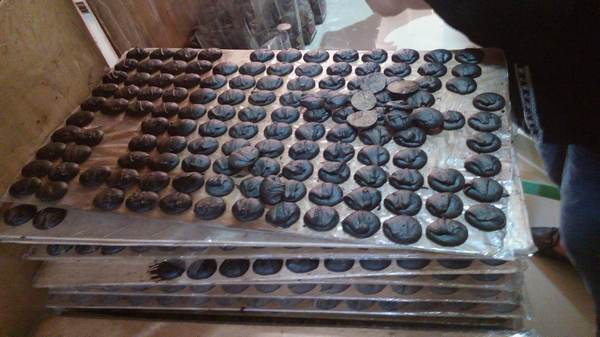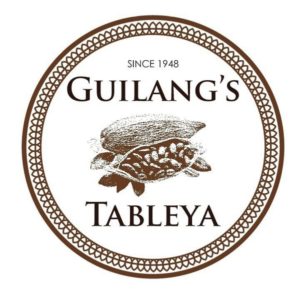For love of family and chocolates

Tablea is madefrom ground and roasted cacao nibs which are molded into rounds or tablets.
About 68 kilometres southeast of Cebu City, is the first class municipality of Argao — known to many for its rich cultural heritage which includes the tradition of making local delicacies like the town’s famous “torta” and “tablea”.
At the forefront of Argao’s tablea-making industry is a 92-year-old widow named Miguela “Guilang” Lanutan whose only dream was to send her children to school even if she did not have the means to do so at the time.
And so with only 50 centavos in her pocket, the native of Argao town took a leap of faith.
Nang Guilang used what little she had in creating quality chocolates from locally-sourced cacao pods in 1948.
After decades of toil toughened by adversity and patient industry, she has reaped the fruits of her labor.
“Ang achievements sa akong mga anak karon mao ang akong trophies sa kinabuhi. Nalipay ko sa tanan nga nahitabo kanamo tungod niining tableya. (The achievements of my children serve as my trophies in life. I’m happy for everything that happened to us because of these chocolate tablets),” said Nang Guilang.
“For every creation, there must be endless devotion,” she told Cebu Daily News in Cebuano.
Workplace
Anyone who drops by the Lanutan family residence in Barangay Canbanua, Argao will be greeted with the mouth-watering aroma of cocoa beans.
It is here where cacao pods — mostly sourced from Davao City — are roasted the traditional way until the skin loosens.
These are then winnowed to separate the skin; before the seeds are grounded, in a mechanical grinder, until a paste-like consistency is achieved.
To attain a soft and smooth texture, the chocolate paste undergoes another process of grinding, this time manually. The mixture is then molded into round tablets.
Nang Guilang’s youngest son, Edgar, says the procedure was passed on to them by their mother to attain a unique taste of their locally-made chocolates.
“We’re the only tablea maker in the Philippines who engages in high roasting — a complex procedure that needs extra care and caution,” he said.

Anyone who drops by the Lanutan family residence in Barangay Canbanua, Argao, will be greeted with the mouth-watering aroma of freshly ground cocoa beans.
“If you make a mistake, then you’ll get a raw product. On the other hand, if it is overcooked, you’ll have a charred substance,” he explained.
Edgar said their chocolate tablets also undergo refining for two to three hours to remove undesirable particles.
The chocolate tablets are subsequently molded by hand — a practice also passed on by their mother.
Edgar, who now supervises the operations of Argao’s famous Guilang’s Tableya, said they do not want to give their customers only a little of what they deserve.
At present, Guilang’s Tableya is sold in various malls and establishments around Cebu as well as in Manila, Cagayan de Oro, and Davao.
From Argaoanon customers who always return for more to the town’s visitors and prominent establishments in various parts of the country, Guilang’s home-made native chocolate has been a hit since the 1970s when the Lanutan family started to sell their chocolate tablets in a popular beach resort in Argao.
Swiss visitor
Edgar recounts that a Swiss tourist, who was an executive of a chocolate company in Switzerland, tasted their product and visited their house to see the preparation for himself.
“According to him, our product was near perfect. However, he taught my mother how to further improve it through tempering and edging,” Edgar said.
“We could no longer remember his name, but we followed his advice. In fact, until now, we continue to use what he taught us although we also implement other procedures based on what we learned from trainings,” he added.
Edgar, the youngest of five siblings, said they always make sure that their chocolate tablets stood out on store shelves over similar products.
“From the time we were still new to this kind of business, we’ve wanted to offer a unique taste to people,” he said.
Their business has grown tremendously in the last five decades that from just two kilograms of cacao daily when they began commercial operations, the family now utilizes 12,000 kilograms of cacao a day.
With more work to do, their employees also grew from two to 27.
“Hopefully, in the middle of 2018, we will be able to produce more chocolate tablets per day especially that we’re expecting a bigger machine to roast and grind cacao beans,” said Edgar, a mechanical engineering graduate.

Guilang’s Tableya / Contributed Photo
Pioneer tablea makers
The Lanutan family, considered a pioneer in Argao’s tablea-making industry, hopes to expand their operations and sell their native chocolate tablets outside the Philippines.
Cacao growing in the Philippines boasts of a long history that stretches from the 1700s during the Spanish colonial period.
The country’s thriving cocoa industry has since been the primary producer of cocoa beans in Southeast Asia.
Cocoa’s by-product, tablea, is also fast becoming a famous worldwide ingredient for food, desserts and drinks.
As the Lanutan’s embark on the global arena, they plan to improve packaging by using a special kind of paper from Guangdong province in China instead of plastic.
“We’re using tons of plastics and we want to stop it in the hope of helping our environment. So maybe, by March next year, we will already use paper packaging,” said Edgar.
He said that they will be forever grateful to their mother, Guilang, for paving their way to success.
“For us, mama is not just an ordinary mother. She is a martyr so to speak. We’re hoping that the success of our business that we now have will continue,” said Edgar.
Disclaimer: The comments uploaded on this site do not necessarily represent or reflect the views of management and owner of Cebudailynews. We reserve the right to exclude comments that we deem to be inconsistent with our editorial standards.
